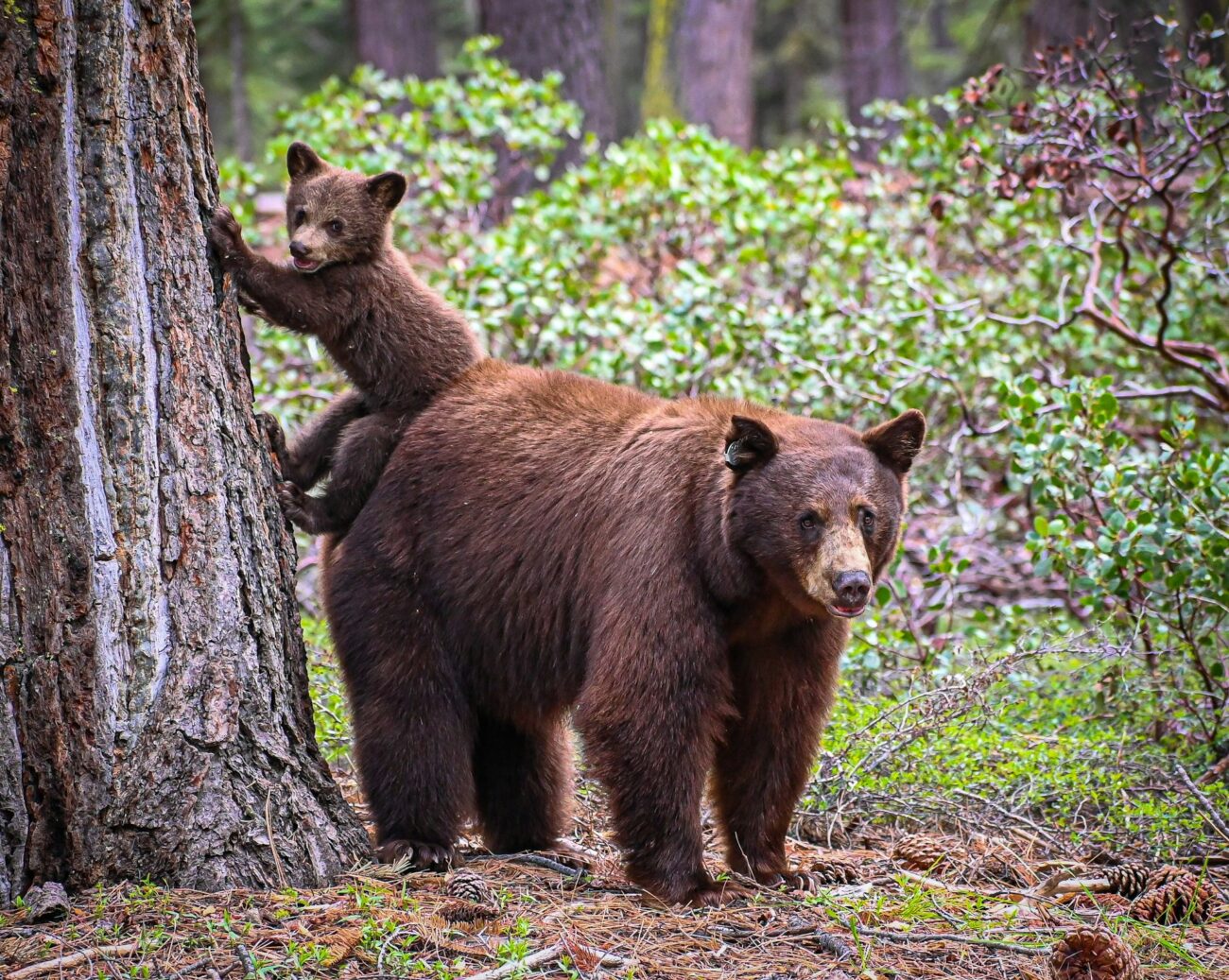Wildlife encounters can be awe-inspiring but potentially dangerous experiences. North America’s wilderness areas are home to magnificent creatures including bears, cougars, and bison – each powerful animals that command respect. While attacks are relatively rare, knowing how to react when face-to-face with these wild animals can mean the difference between a memorable nature experience and a dangerous situation.
This guide provides essential knowledge for outdoor enthusiasts, hikers, campers, and anyone venturing into areas where these magnificent but potentially dangerous animals live. Understanding wildlife behavior and appropriate human responses can help ensure both your safety and the conservation of these important species.
Understanding Wildlife Behavior: The Basics
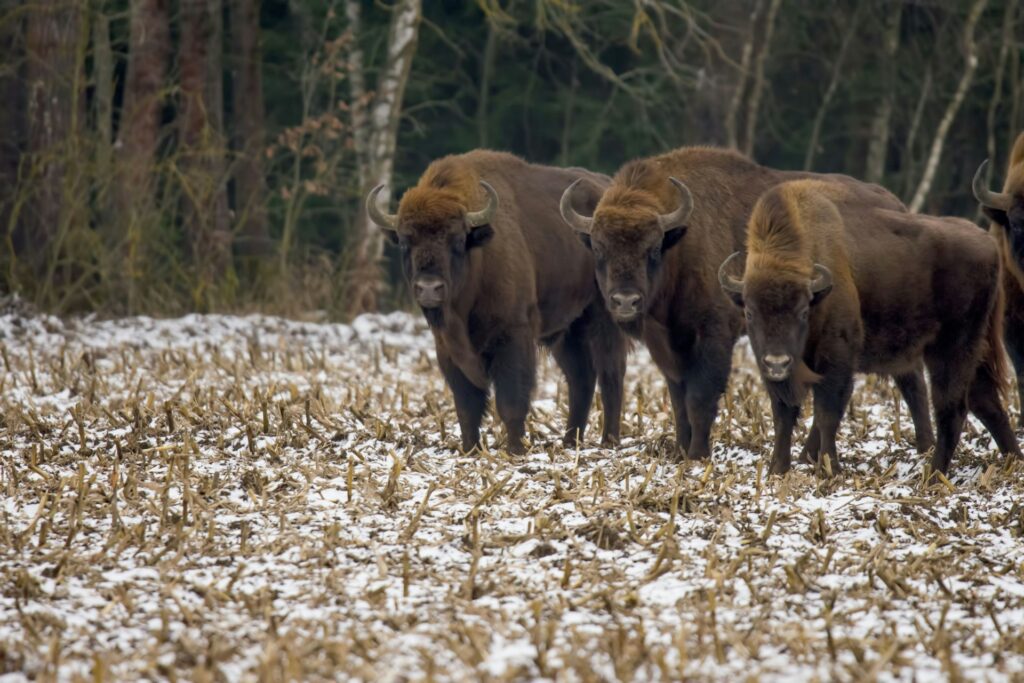
Before delving into specific animals, it’s important to understand some general principles about wildlife encounters. Most wild animals, including bears, cougars, and bison, don’t naturally view humans as prey and typically prefer to avoid interaction with people whenever possible. Attacks most commonly occur when animals feel threatened, are protecting their young, or have been habituated to humans through improper food storage or feeding.
Recognizing the warning signs of animal stress or aggression can give you crucial seconds to respond appropriately. When venturing into wildlife habitats, always maintain awareness of your surroundings, make noise to avoid surprise encounters, and keep a respectful distance from all wild animals you observe.
Bear Encounter Basics: Identification Matters
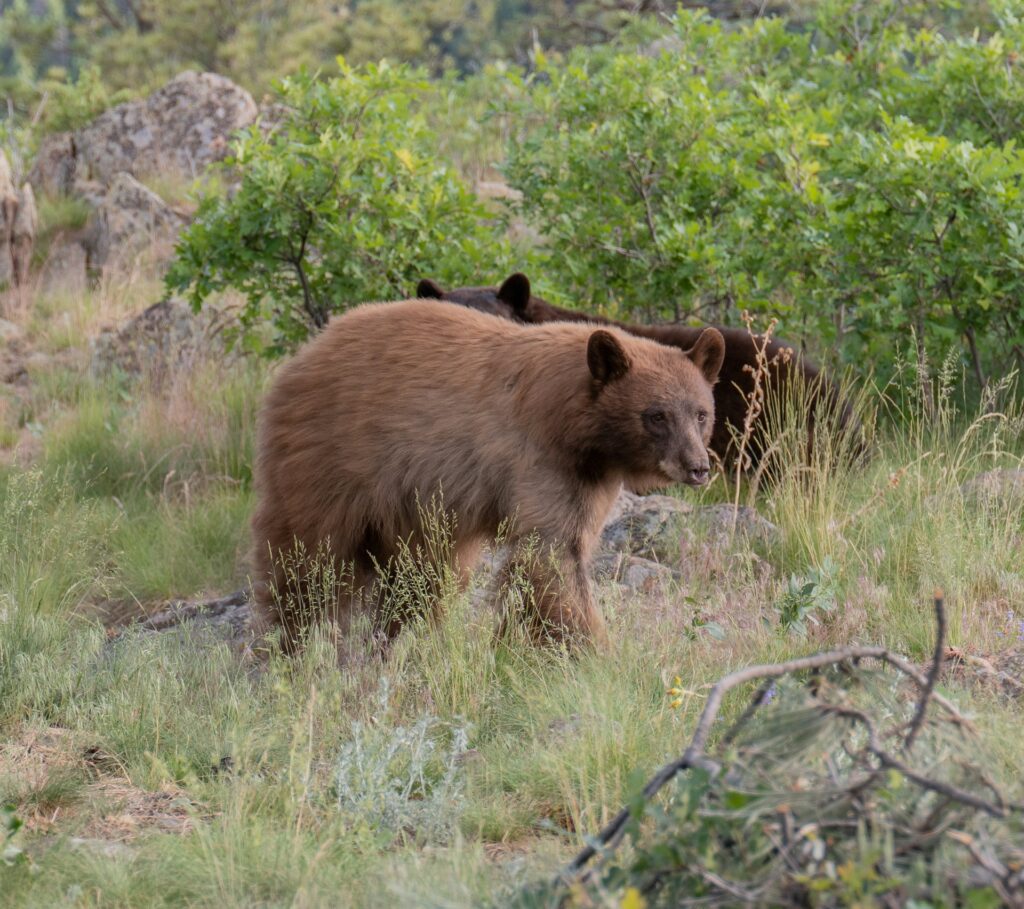
North America is home to three main bear species: black bears, brown/grizzly bears, and polar bears, with different recommended responses for each. Despite their name, black bears can range in color from black to brown, cinnamon, or even blonde, making identification by color alone unreliable. Grizzlies typically have a distinctive shoulder hump, dish-shaped face, and longer front claws, while black bears have a straighter facial profile and shorter claws.
Identification matters because appropriate responses vary based on species – black bears are often more timid and may be bluffing when they charge, while grizzlies tend to be more aggressive when threatened. Knowing which type of bear you’re dealing with can help you respond appropriately if an encounter escalates.
Prevention: Avoiding Bear Encounters
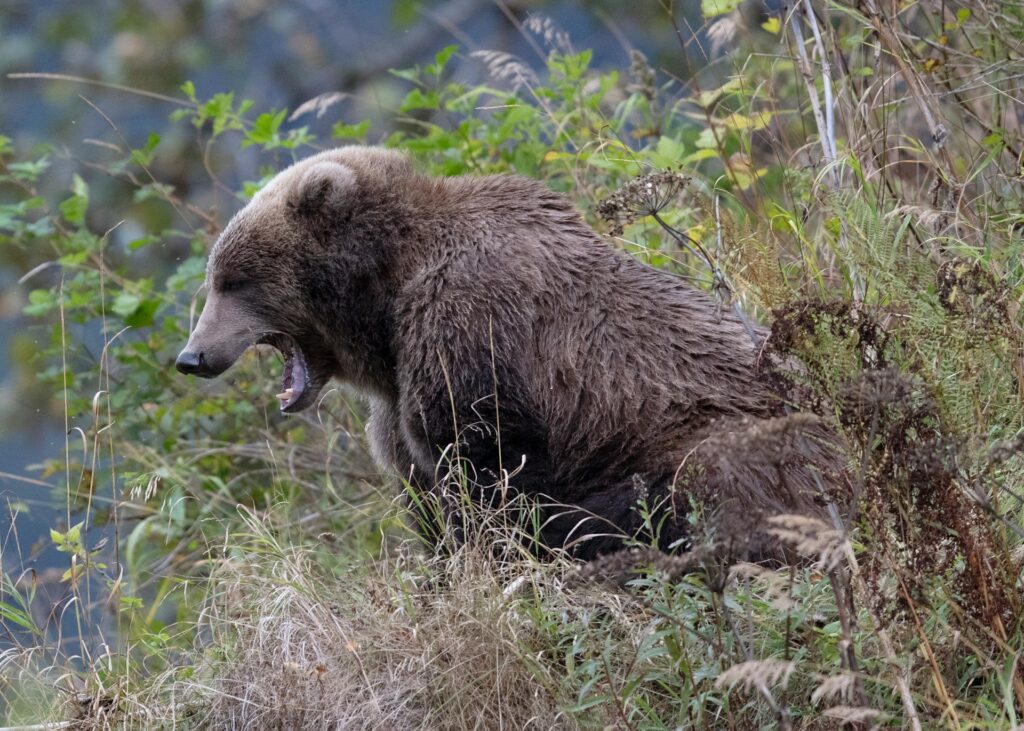
The best bear encounter is one that never happens. When hiking in bear country, make noise by talking, singing, or clapping regularly, especially near streams, dense vegetation, or when rounding blind corners where bears might not hear your approach. Always carry bear spray in an accessible location and know how to use it before heading out.
Proper food management is crucial – never leave food unattended, use bear-resistant containers, cook and store food at least 100 yards from your sleeping area, and follow all local regulations for food storage. Hike in groups whenever possible, as bears are less likely to approach multiple people than a solo hiker. Stay alert for bear signs like tracks, scat, claw marks on trees, or overturned rocks and logs.
If You Encounter a Black Bear
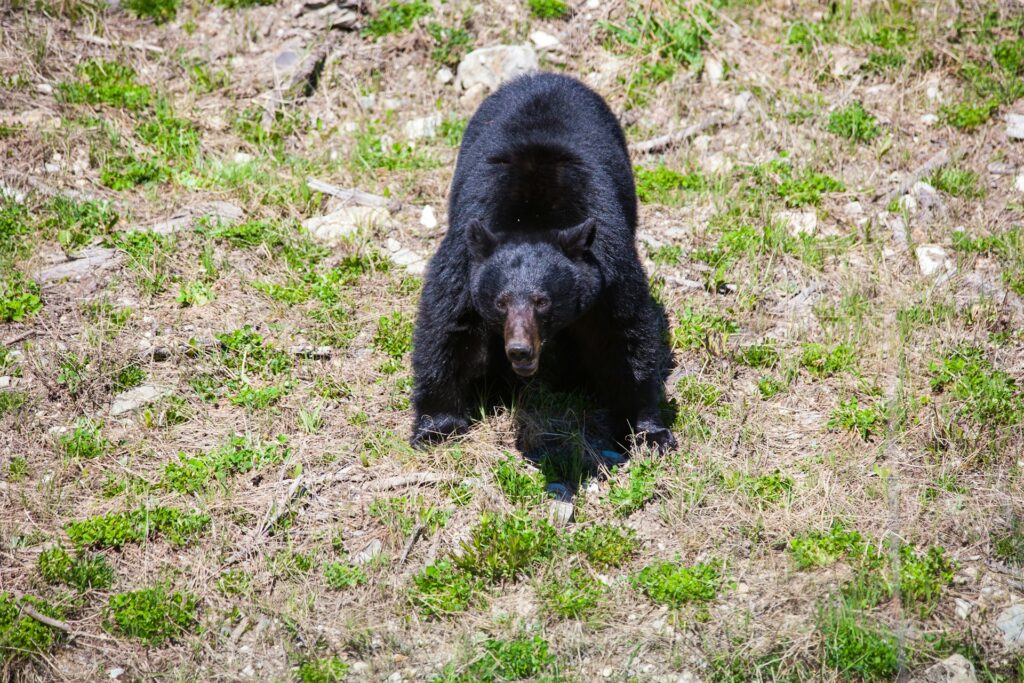
If you encounter a black bear, remain calm and assess the situation without panicking. Make yourself look larger by raising your arms and standing close to others if you’re in a group, while speaking in a firm, loud voice to let the bear know you’re human. Most black bears will leave once they recognize you’re not a prey animal. If the bear doesn’t leave, start backing away slowly while continuing to face the animal, never running or turning your back.
In the rare case of a black bear attack, wildlife experts recommend fighting back aggressively using whatever is available – rocks, sticks, or your bare hands – targeting the bear’s face and muzzle. Unlike with grizzlies, playing dead is not recommended during a black bear attack, as they may continue their predatory behavior.
If You Encounter a Grizzly/Brown Bear
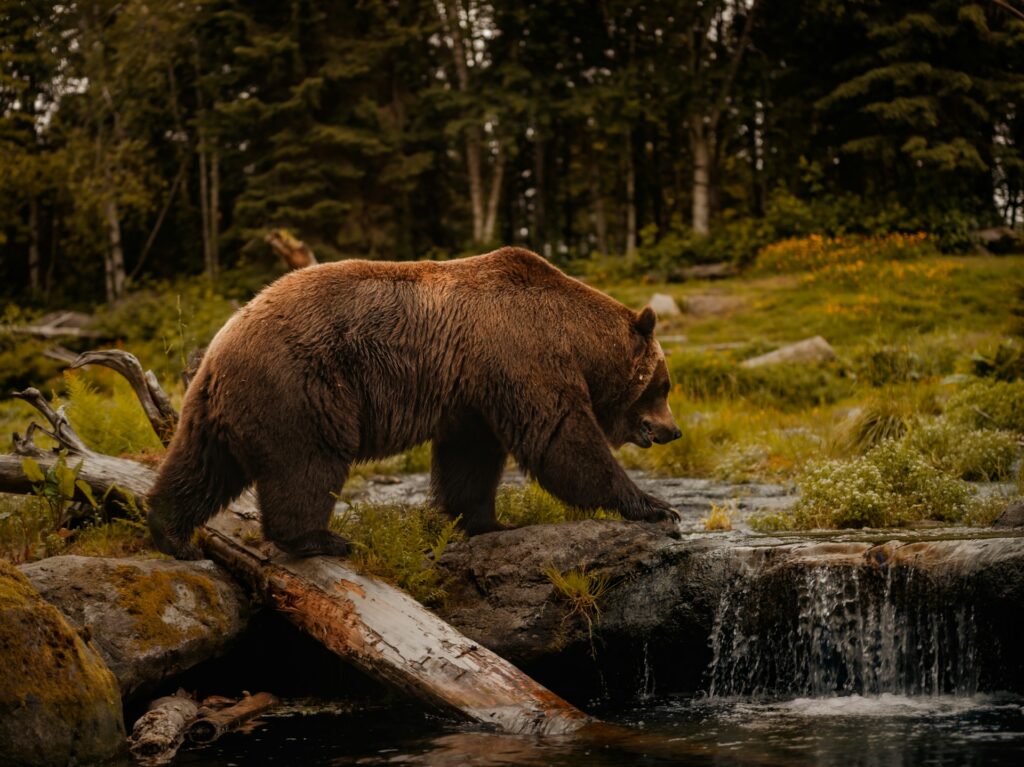
Grizzly encounters require different tactics than those with black bears due to their more aggressive nature. If you spot a grizzly that hasn’t noticed you, quietly back away and detour around its location, giving the animal plenty of space. If the bear notices you, speak calmly in a low voice, slowly wave your arms to identify yourself as human, and avoid direct eye contact which can be perceived as threatening.
Should a grizzly charge, this is the time to ready your bear spray, removing the safety and preparing to deploy it if the bear comes within range (typically 30-60 feet). If a grizzly makes physical contact, play dead by lying flat on your stomach with your hands clasped behind your neck, legs spread to prevent being rolled over, and stay still until the bear leaves the area completely.
Using Bear Spray Effectively
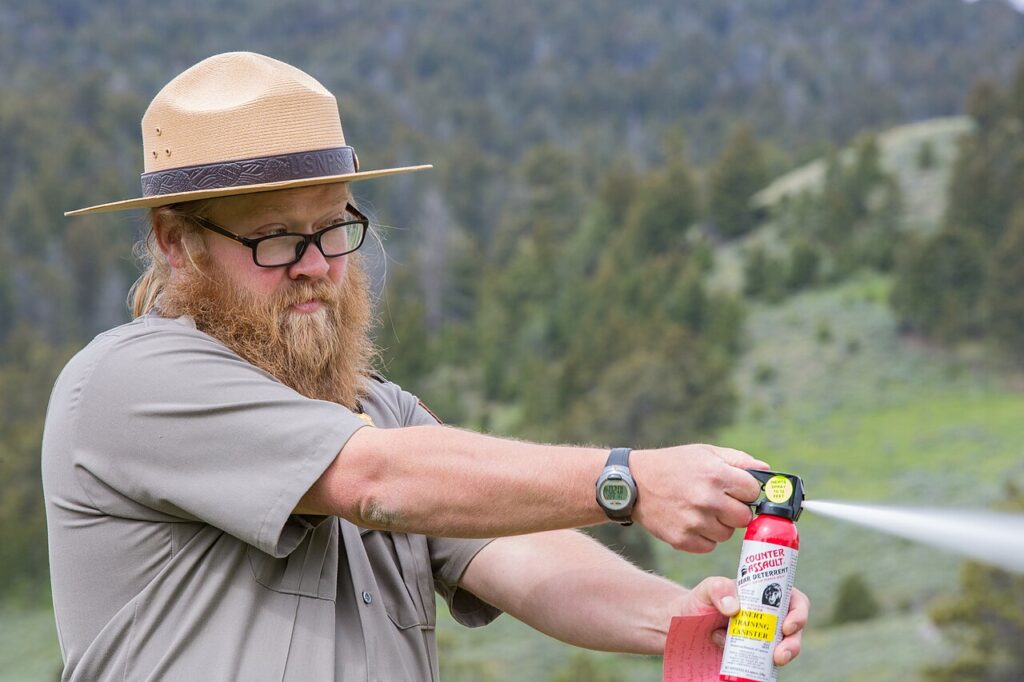
Bear spray is your most important defense tool in bear country, but it’s only effective if you know how to use it properly. Purchase EPA-registered bear spray with a concentration of 1-2% capsaicin and related capsaicinoids, with a spray duration of at least 6 seconds and a range of at least 25 feet. Practice removing the safety mechanism before heading out, as fumbling with unfamiliar equipment during an emergency can waste precious seconds.
When deploying bear spray, aim slightly downward toward the approaching bear, creating a cloud that the animal will run into, affecting its eyes, nose, and lungs. Be aware of wind direction to avoid having the spray blow back into your face, and be prepared to move perpendicular to the wind if necessary. After using bear spray, leave the area promptly as the irritant is temporary and the bear may return once the effects wear off.
Cougar Encounter Basics
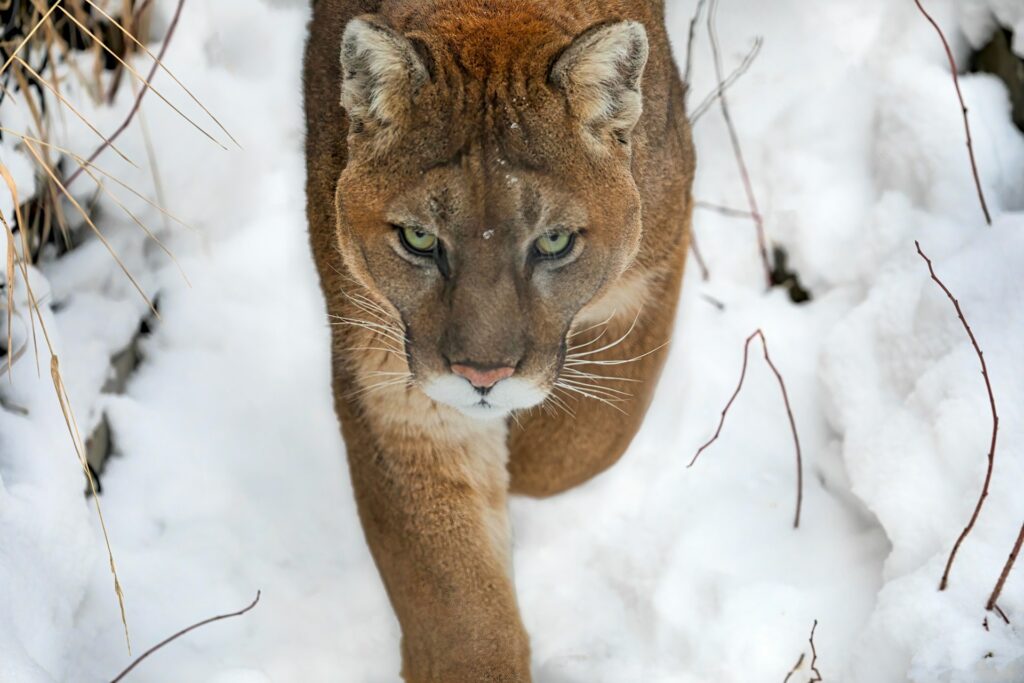
Cougars (also known as mountain lions, pumas, or panthers) are typically secretive predators that rarely interact with humans, but encounters do occur in their range across western North America. Unlike bears, cougars are ambush predators that stalk their prey, so you may not be aware of their presence until they’re close.
Signs of cougar presence include partially covered animal carcasses, scrapes in soft ground or snow, and tracks that show four toes without claw marks (unlike canine tracks). Cougars are most active at dawn, dusk, and night, though they can be encountered at any time. When in cougar territory, travel in groups when possible and keep children close by, as smaller individuals may trigger a cougar’s predatory response.
If You Encounter a Cougar
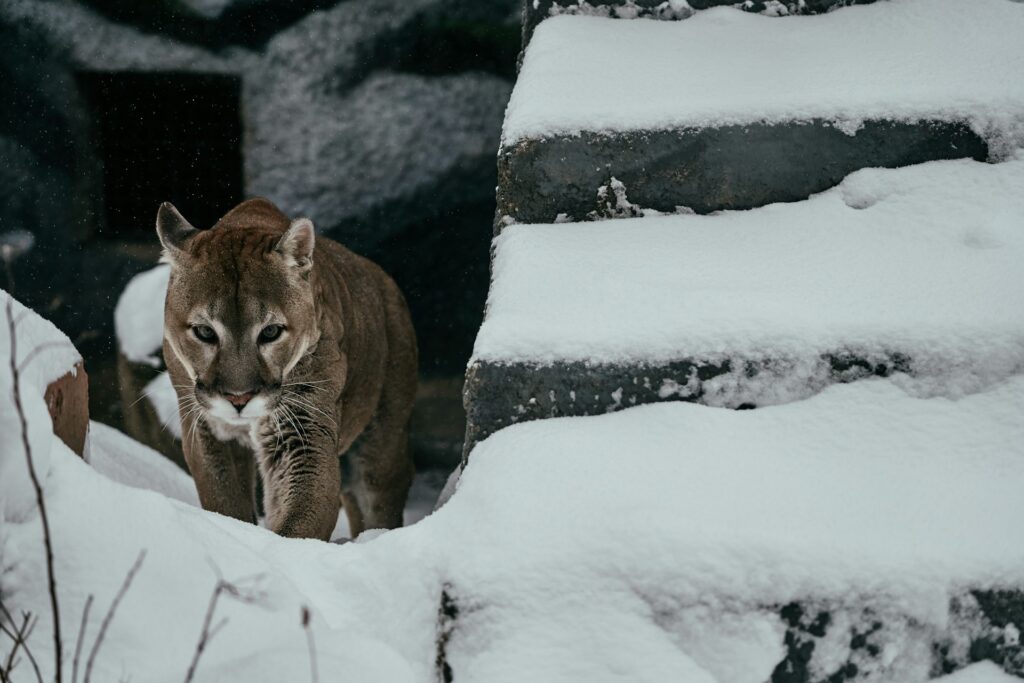
If you spot a cougar, the key is to avoid triggering its chase instinct while demonstrating you are not prey. Maintain eye contact with the animal and never turn your back or run, as this may stimulate its pursuit instinct. Make yourself look as large and intimidating as possible by raising your arms, opening your jacket if you’re wearing one, and standing close to others in your group.
Speak firmly and loudly to the cougar while slowly backing away, giving the animal room to escape. If you have small children with you, pick them up immediately without bending over or turning away from the cougar. Keep all pets leashed and close to you, as loose pets can trigger predatory behavior and then lead the cougar back to you.
If a Cougar Approaches or Attacks
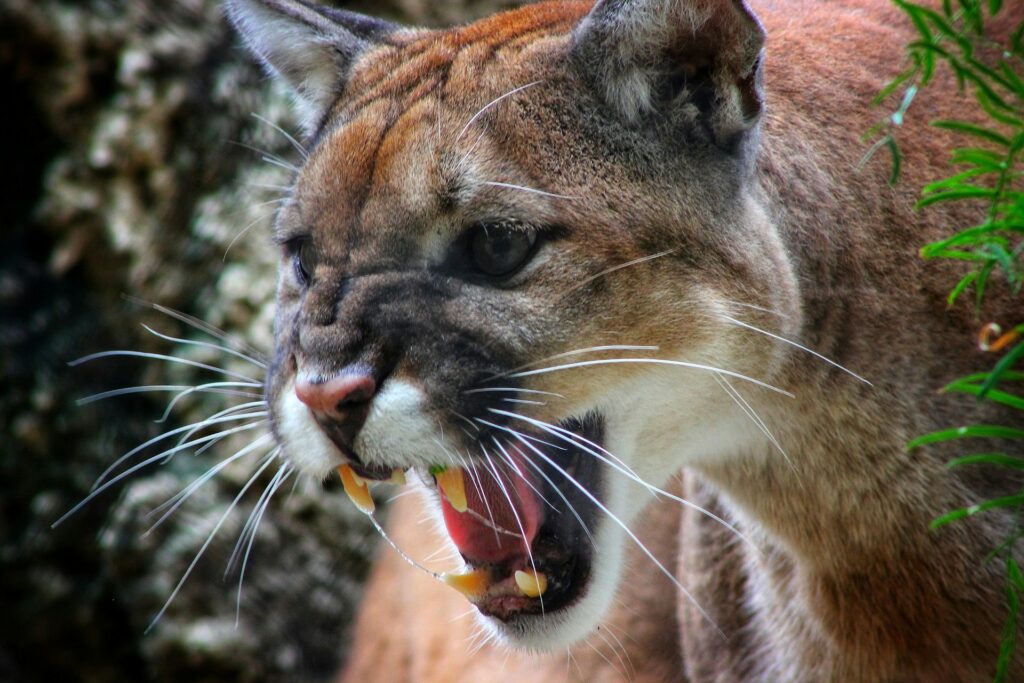
A cougar that approaches rather than retreats is displaying serious predatory interest and requires immediate defensive action. Throw stones, branches, or whatever you can reach without crouching or turning your back on the animal, aiming for the space in front of the cougar rather than hitting it directly at first. Use bear spray if you have it, following the same deployment techniques recommended for bear encounters. If a cougar attacks, fight back aggressively with whatever is available, focusing on the animal’s face and eyes.
Unlike with some bear attacks, playing dead is never recommended during a cougar encounter. Use hiking poles, rocks, branches, or any available tools to defend yourself, and continue fighting until the cougar retreats, as many people have successfully fought off attacking cougars.
Bison Encounter Basics
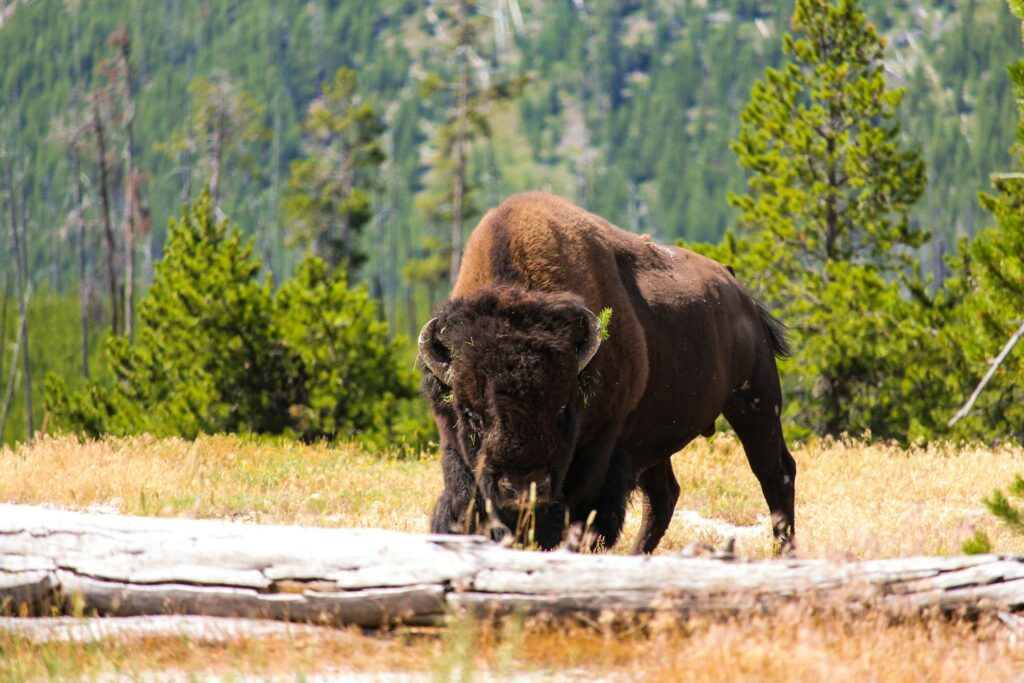
Bison may appear docile and cow-like, but they are wild animals that can reach speeds of 35 mph and are responsible for more injuries in Yellowstone National Park than any other animal. These massive creatures, weighing up to 2,000 pounds, can be deceptively quick and agile despite their bulk. Bison have poor eyesight but acute hearing and sense of smell, and they may react to perceived threats with surprising speed.
Warning signs of an agitated bison include pawing the ground, snorting, raising its tail, lowering its head, and shaking its head from side to side. Female bison are particularly protective during calving season (typically April through June), while males become more aggressive during the July-August rut when they compete for mates.
If You Encounter a Bison
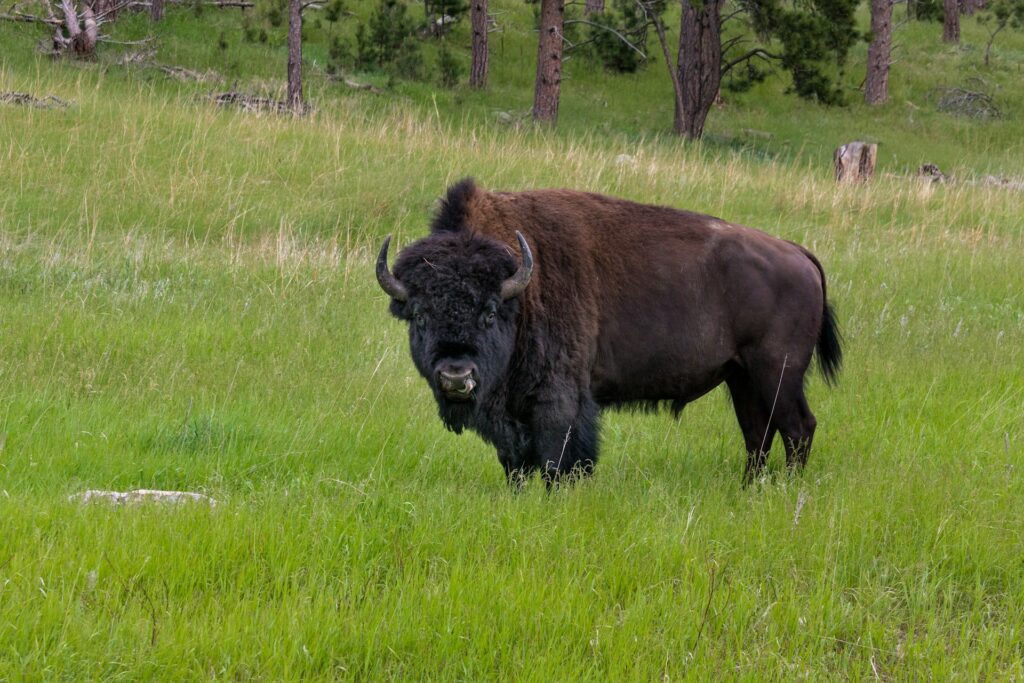
The National Park Service recommends staying at least 25 yards (75 feet) away from bison at all times, regardless of how calm they appear. If you find yourself closer to a bison than the recommended distance, slowly back away to increase your separation without running or making sudden movements that might trigger a charge.
Always give bison the right of way on trails, roads, and walkways, waiting patiently if they’re blocking your path rather than attempting to pass them. Never approach or attempt to feed bison under any circumstances, even if they appear accustomed to human presence. If you’re in a vehicle, remain inside when bison are nearby, as people have been gored when stepping out to take photos of roadside bison.
If a Bison Charges
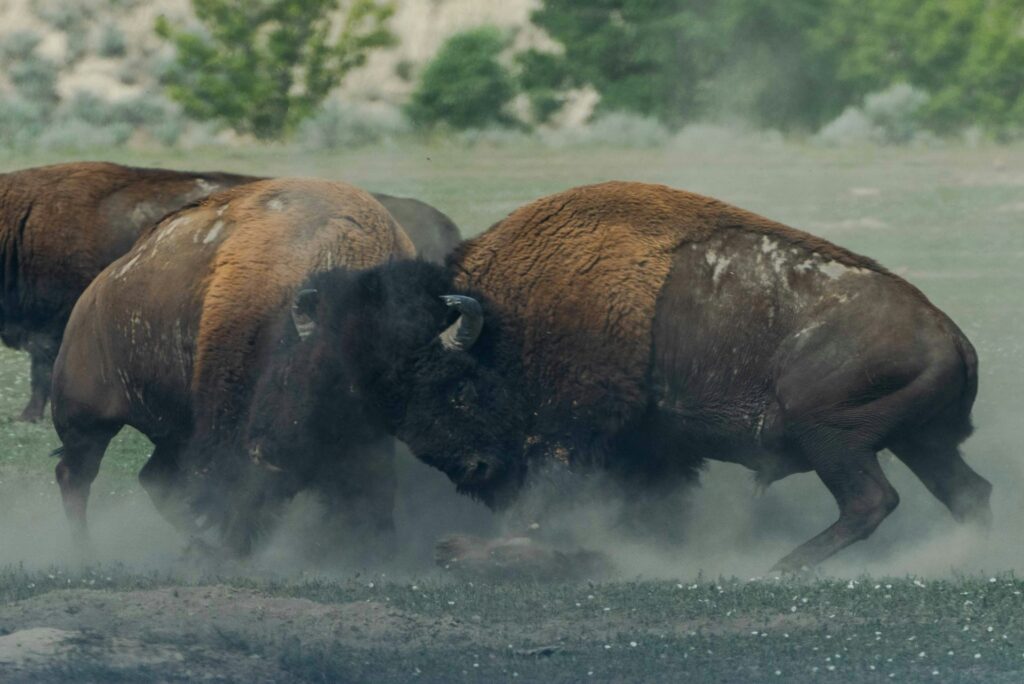
A charging bison requires immediate evasive action, as these animals can inflict serious injuries with their horns, hooves, and sheer mass. If a bison charges, run away immediately and seek shelter in a vehicle or behind a substantial barrier like a large tree or boulder. Unlike with bears or cougars, standing your ground against a charging bison is not recommended due to their size and power.
If no shelter is available and you cannot outrun the bison, try to put substantial obstacles between you and the animal to discourage pursuit. In the worst-case scenario of being knocked down by a bison, curl into a ball to protect your vital organs and play dead until the animal loses interest and moves away. Remember that bison typically charge as a warning and may stop short if you’re moving away from them.
Wildlife Viewing Ethics and Safety
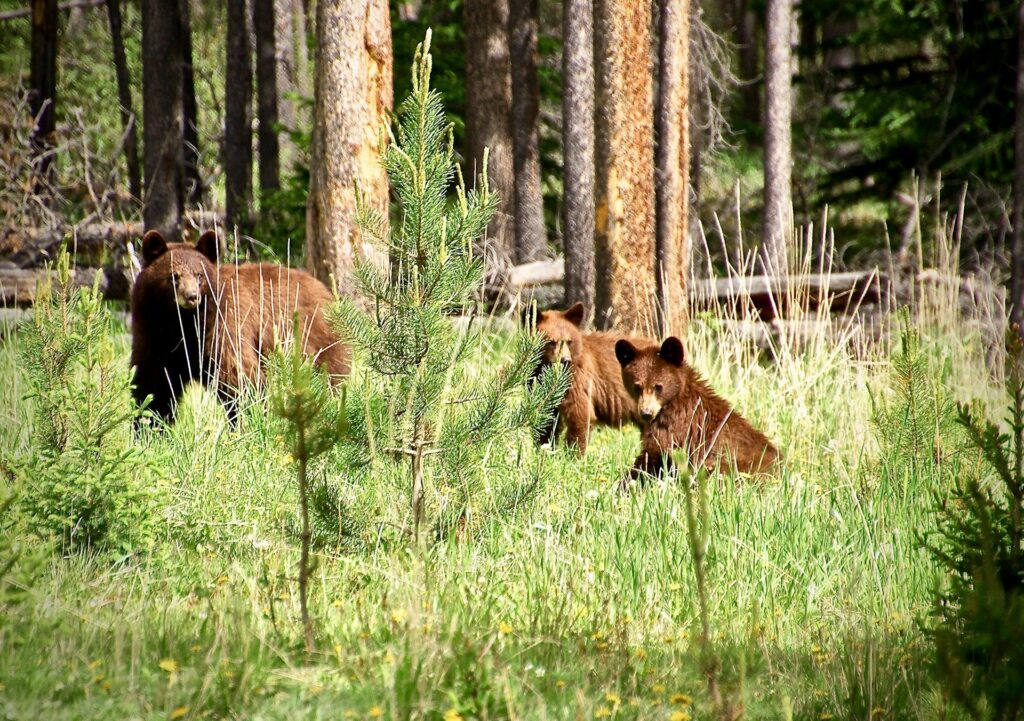
Respectful wildlife viewing practices not only keep you safe but also protect animals and preserve their natural behaviors. Never feed wildlife, as this leads to habituation and dangerous dependence on humans that often ends badly for the animals. Stick to designated trails and viewing areas to minimize habitat disruption and reduce surprise encounters. Use binoculars or telephoto lenses to observe animals from a distance rather than approaching for better photos.
Keep pets leashed in wildlife areas or leave them at home, as dogs often provoke defensive responses from wild animals. Remember that you are a visitor in these animals’ homes, and your responsibility is to observe without interfering in their natural behaviors or movements.
After an Encounter: Reporting and Reflection
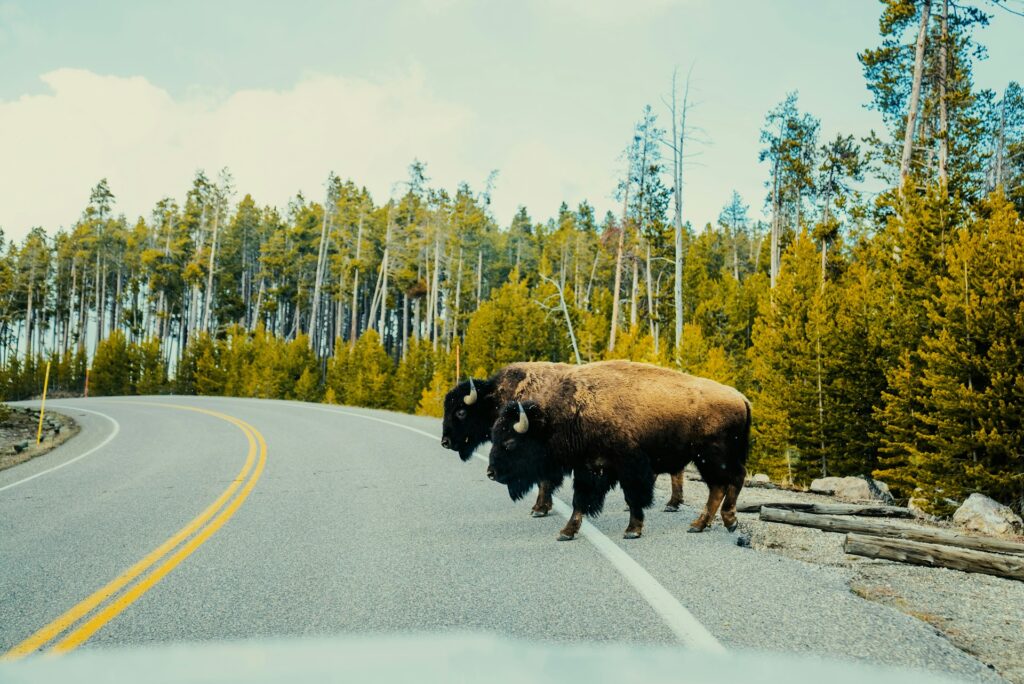
After any significant wildlife encounter, especially one involving aggressive behavior or an attack, report the incident to local park rangers, wildlife officials, or land managers as soon as possible. These reports help authorities track animal behavior, identify potentially problematic individuals, and warn other visitors if necessary. Take time to reflect on the encounter and evaluate what went well and what you might do differently in future situations.
Share your experience with others in a way that emphasizes respect for wildlife and proper safety procedures rather than sensationalizing the encounter. Consider carrying improved safety equipment or adjusting your outdoor practices based on what you learned from the experience, as every wildlife encounter provides valuable education for future wilderness adventures.
Conclusion
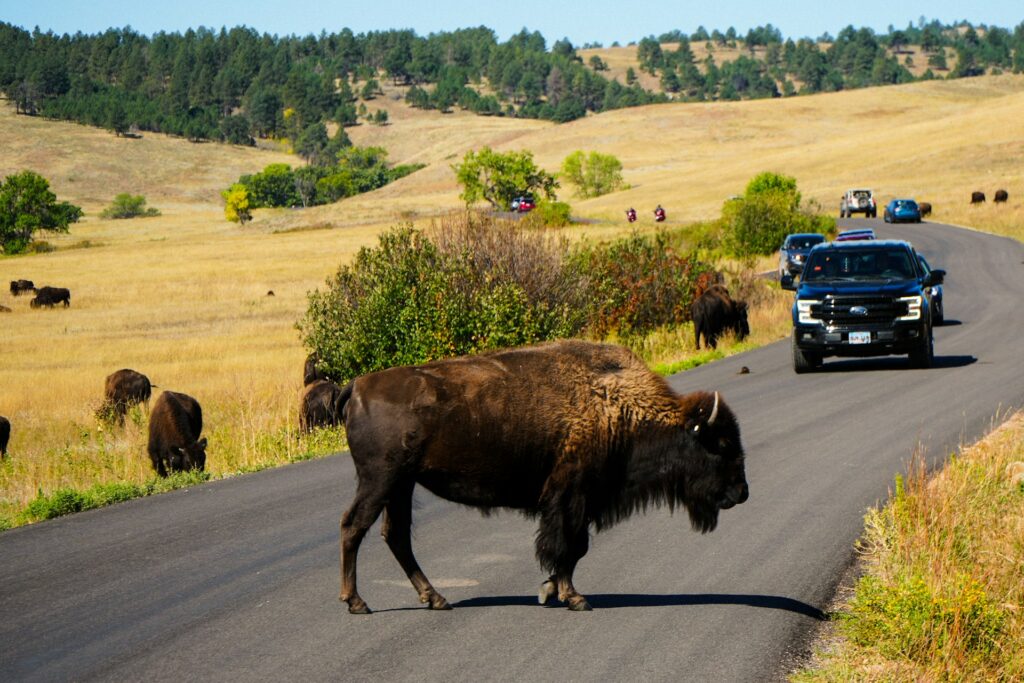
Wildlife encounters represent some of the most memorable experiences the natural world offers, combining wonder with the primal awareness that comes from sharing space with powerful wild animals. By understanding proper behavior around bears, cougars, and bison, you can minimize risks while maximizing appreciation for these magnificent creatures.
Remember that in almost all cases, these animals have no interest in confrontation with humans and are simply trying to survive in their natural habitats. Approach wilderness areas with respect, preparation, and knowledge, and you’ll be equipped to handle unexpected animal encounters with confidence and safety.

